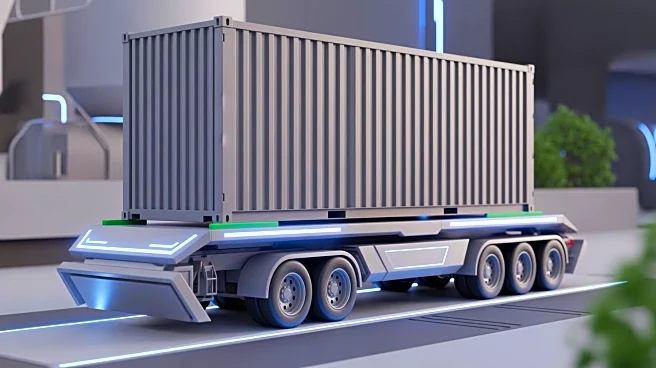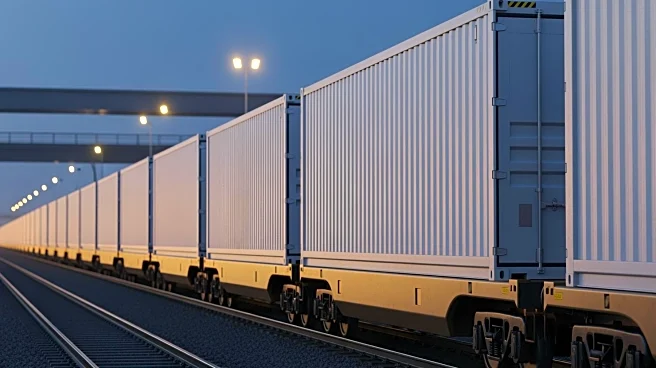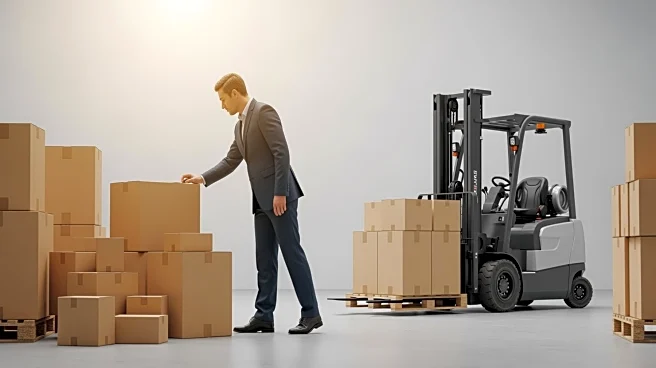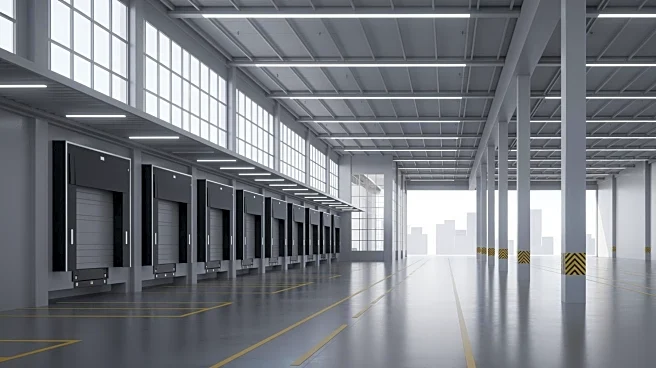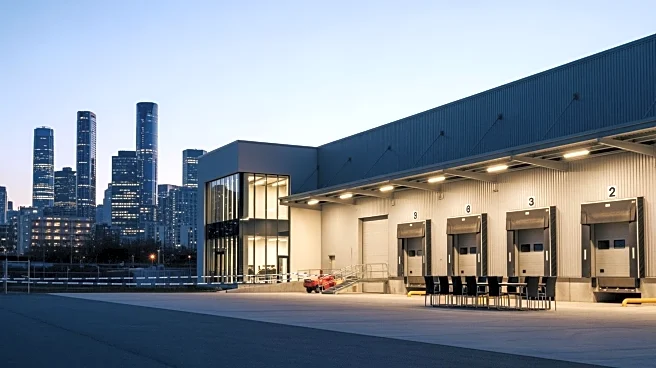What's Happening?
Intermodal transportation is gaining traction in the U.S. as a cost-effective and sustainable alternative to traditional trucking. The method involves using multiple modes of transport, such as rail and truck,
to move goods. Recent investments in infrastructure, like the $100-million expansion of the Patrick J. Ottensmeyer International Railway Bridge in Texas, are enhancing the reliability and efficiency of intermodal services. Rail mergers, such as the combination of Canadian Pacific and Kansas City Southern, are also streamlining operations, reducing transit times, and increasing capacity. These developments are making intermodal transport more competitive with trucking, offering shippers cost savings of 8-18% and reducing carbon emissions by about 75%.
Why It's Important?
The shift towards intermodal transport is significant for the U.S. logistics industry, offering a more sustainable and cost-effective solution for shippers. As companies face increasing pressure to reduce carbon footprints, intermodal transport provides a viable option to meet environmental goals. The stability of intermodal rates, which typically remain consistent for 12 months, offers financial predictability for businesses. Additionally, the growing demand for door-to-door billing and bundled intermodal products is simplifying logistics processes, making it easier for companies to manage complex supply chains. This trend is likely to continue as technology improves visibility and tracking, further enhancing the appeal of intermodal solutions.
What's Next?
The intermodal sector is expected to grow as more companies recognize its benefits. The ongoing development of infrastructure and technology will likely lead to further improvements in service quality and efficiency. The Combating Organized Retail Crime Act of 2025, which aims to address cargo theft, could also enhance security in the supply chain. As nearshoring increases, particularly in Mexico, intermodal transport is poised to play a crucial role in facilitating cross-border trade. Companies are encouraged to explore intermodal options to diversify their logistics strategies and mitigate potential disruptions in traditional trucking routes.
Beyond the Headlines
The rise of intermodal transport reflects broader shifts in the logistics industry towards sustainability and efficiency. As companies adopt more environmentally friendly practices, intermodal transport could become a standard component of supply chain strategies. The integration of artificial intelligence and other technologies is expected to further optimize operations, providing real-time insights and improving decision-making. These advancements could lead to a more resilient and adaptable logistics network, capable of responding to changing market demands and environmental challenges.
